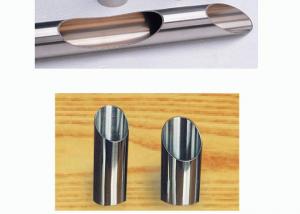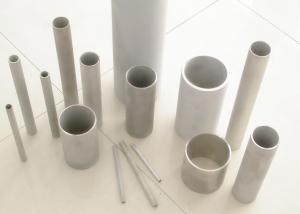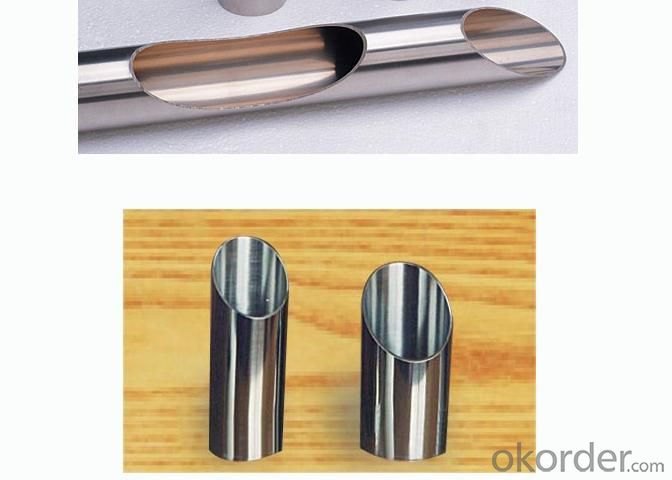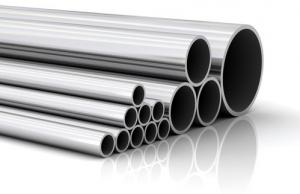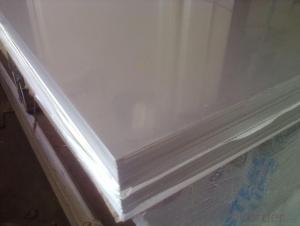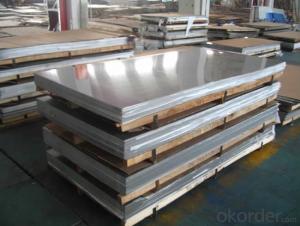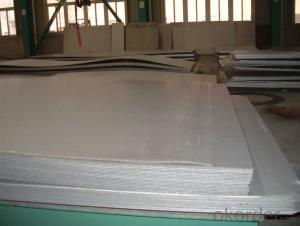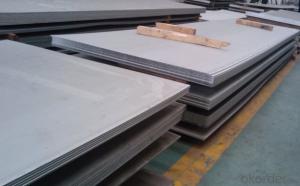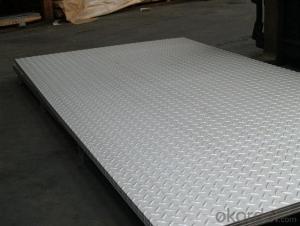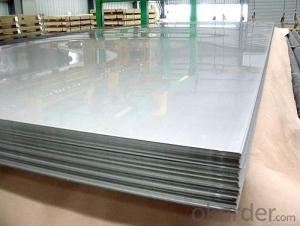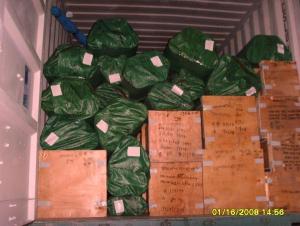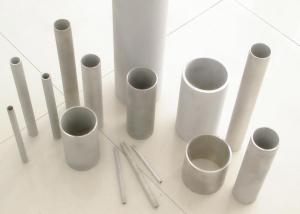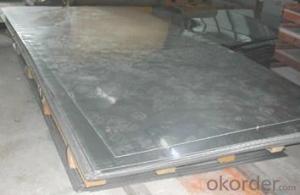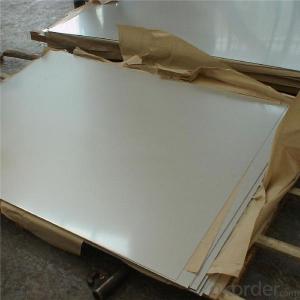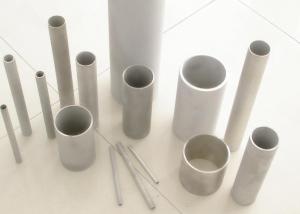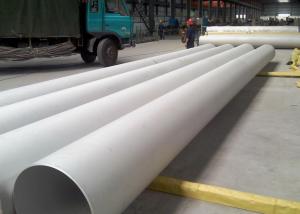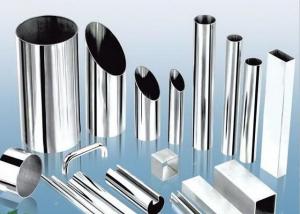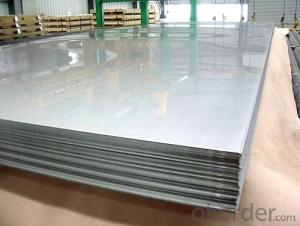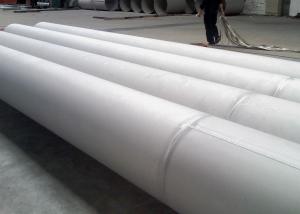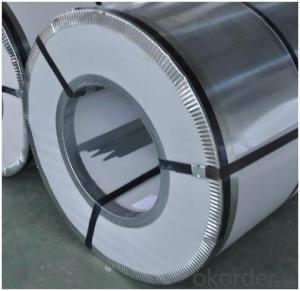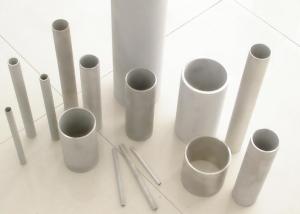321 Stainless Steel Seamless Tubing
- Loading Port:
- China Main Port
- Payment Terms:
- TT or LC
- Min Order Qty:
- 5 Tons m.t.
- Supply Capability:
- 1000 Tons Per Month m.t./month
OKorder Service Pledge
OKorder Financial Service
You Might Also Like
Stainless Steel Seamless Pipe
APPLICATION:
Construction industry.
Chemical industry
Water tube
Pulp&Paper making industry
Heat exchanger tube,boiler tube,condenser tube,etc.
Available size range of Stainless Steel Seamless Pipe
|
OUTSIDE DIAMETER |
WALL THICKNESS | ||||||||
|
INCH |
MM |
Sch10 |
Sch40 |
STD |
Sch80 |
XS |
Sch160 |
XXS | |
|
1/8" |
10.29 |
1.24 |
1.73 |
1.73 |
2.41 |
2.41 |
- |
- | |
|
1/4" |
13.72 |
1.65 |
2.24 |
2.24 |
3.02 |
3.02 |
- |
- | |
|
3/8” |
17.15 |
1.65 |
2.31 |
2.31 |
3.20 |
3.20 |
- |
- | |
|
1/2" |
21.34 |
2.11 |
2.77 |
2.77 |
3.73 |
3.73 |
4.78 |
7.47 | |
|
3/4 " |
26.67 |
2.11 |
2.87 |
2.87 |
3.91 |
3.91 |
5.56 |
7.82 | |
|
1'' |
33.40 |
2.77 |
3.38 |
3.38 |
4.55 |
4.55 |
6.35 |
9.09 | |
|
1.1/4" |
42.16 |
2.77 |
3.56 |
3.56 |
4.85 |
4.85 |
6.35 |
9.70 | |
|
1.1/2'' |
48.30 |
2.77 |
3.68 |
3.68 |
5.08 |
5.08 |
7.14 |
10.15 | |
|
2" |
60.30 |
2.77 |
3.91 |
3.91 |
5.54 |
5.54 |
8.74 |
11.07 | |
|
2 1/2" |
73.03 |
3.05 |
5.16 |
5.16 |
7.01 |
7.01 |
9.53 |
14.02 | |
|
3" |
88.90 |
3.05 |
5.49 |
5.49 |
7.62 |
7.62 |
11.13 |
15.24 | |
|
3 1/2” |
101.60 |
3.05 |
5.74 |
5.74 |
8.08 |
8.08 |
- |
- | |
|
4'' |
114.30 |
3.05 |
6.02 |
6.02 |
8.56 |
8.56 |
13.49 |
17.12 | |
|
5” |
141.30 |
3.40 |
6.55 |
6.55 |
9.52 |
9.52 |
15.88 |
19.05 | |
|
6" |
168.30 |
3.40 |
7.11 |
7.11 |
10.97 |
10.97 |
18.26 |
21.96 | |
|
8'' |
219.08 |
3.76 |
8.18 |
8.18 |
12.70 |
12.70 |
23.01 |
22.23 | |
|
10” |
273.05 |
4.19 |
9.27 |
9.27 |
15.08 |
12.70 |
28.58 |
25.40 | |
|
12" |
323.85 |
4.57 |
9.52 |
9.53 |
17.45 |
12.70 |
33.32 |
25.40 | |
|
14" |
355.60 |
4.78 |
11.13 |
9.53 |
19.05 |
12.70 |
35.71 |
- | |
|
16" |
406.40 |
4.78 |
12.70 |
9.53 |
21.44 |
12.70 |
40.49 |
- | |
|
18" |
457.20 |
4.78 |
14.27 |
9.53 |
23.83 |
12.70 |
45.24 |
- | |
|
20" |
508.00 |
5.54 |
15.09 |
9.53 |
26.19 |
12.70 |
50.01 |
- | |
|
22" |
558.80 |
5.54 |
- |
9.53 |
28.58 |
12.70 |
53.98 |
- | |
|
24" |
609.60 |
6.35 |
17.48 |
9.53 |
30.96 |
12.70 |
59.54 |
- | |
Note : We can also produce the sizes beyond this table according to the requirements of customers
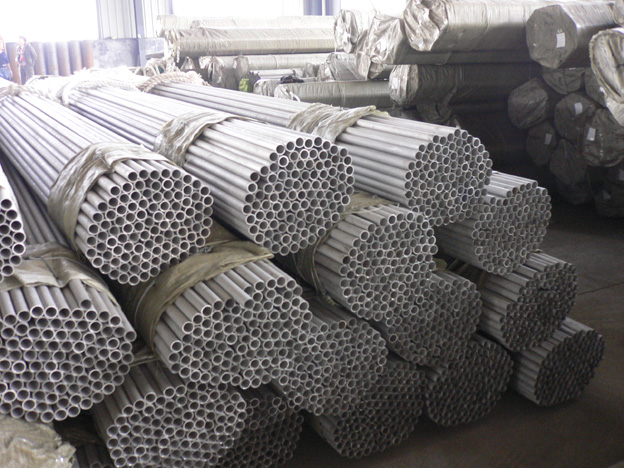
- Q: Do stainless steel sheets have a warranty?
- Stainless steel sheets usually have a warranty, which can differ in duration and terms depending on the manufacturer and specific product. It is advisable to consult with the supplier or manufacturer to obtain precise information regarding the warranty coverage. Generally, defects in material or workmanship are covered by the warranty, and if any problems occur within the specified warranty period, the stainless steel sheet can be replaced or repaired. To maintain the warranty's validity, it is crucial to adhere to the care and maintenance instructions provided by the manufacturer.
- Q: How do you clean stainless steel sheets?
- Achieving clean stainless steel sheets is an easy and effective task. Begin by gently wiping away any loose dirt or debris from the surface using a soft cloth or sponge. Next, a cleaning solution can be prepared by combining warm water with a mild detergent or dish soap. Immerse a non-abrasive sponge or cloth into the solution and gently scrub the stainless steel sheet in the direction of the grain. It is important to avoid abrasive materials or harsh chemicals as they may cause damage to the surface. To eliminate any soap residue, thoroughly rinse the sheet with clean water. Finally, dry the sheet using a soft cloth or towel, once again following the grain to prevent water spots or streaks. This process will effectively preserve the shine and cleanliness of your stainless steel sheets.
- Q: Can stainless steel sheets be used in medical applications?
- Yes, stainless steel sheets can be used in medical applications. Stainless steel is commonly used in the medical industry due to its excellent corrosion resistance, durability, and ease of cleaning. It is often used for surgical instruments, medical equipment, implants, and other medical devices.
- Q: Can stainless steel sheets be used for staircase railings?
- Yes, stainless steel sheets can be used for staircase railings. Stainless steel is a durable and corrosion-resistant material, making it suitable for outdoor and indoor applications. Additionally, its sleek and modern appearance adds an aesthetic appeal to staircase railings.
- Q: Are stainless steel sheets suitable for elevator interiors?
- Yes, stainless steel sheets are highly suitable for elevator interiors. Stainless steel is a durable and versatile material that offers a range of benefits for elevator design and construction. Its strength and corrosion resistance make it ideal for withstanding the heavy use and potential exposure to moisture or chemicals commonly found in elevator environments. Stainless steel sheets can be easily customized and fabricated to fit specific elevator dimensions and designs. They can be polished to a high shine, giving a sleek and modern appearance that complements various interior styles. Additionally, stainless steel is easy to clean and maintain, making it a practical choice for high-traffic areas like elevators. Furthermore, stainless steel is a sustainable material, as it is fully recyclable and has a long lifespan, reducing the need for frequent replacements. It also offers excellent fire resistance, which is crucial for maintaining the safety of elevator occupants. Overall, stainless steel sheets provide a durable, aesthetically pleasing, and low-maintenance option for elevator interiors, making them highly suitable for use in elevators.
- Q: Can stainless steel sheets be used for swimming pool construction?
- Yes, stainless steel sheets can be used for swimming pool construction. Stainless steel is a durable and corrosion-resistant material, making it an excellent choice for pool construction. It is highly resistant to chemicals and can withstand the harsh conditions of a swimming pool environment, including exposure to chlorine and saltwater. Stainless steel sheets are also easy to clean and maintain, making them a popular option for both residential and commercial swimming pools. Additionally, stainless steel offers a sleek and modern aesthetic, enhancing the overall appearance of the pool. However, it is important to ensure that the stainless steel sheets used in pool construction are of high quality and meet industry standards to ensure long-lasting performance and safety.
- Q: Can stainless steel sheets be used for roofing or cladding?
- Certainly! Roofing or cladding can definitely utilize stainless steel sheets. Stainless steel, being a durable and resistant material, is perfectly suitable for exterior purposes. It provides exceptional strength and can endure severe weather, thus making it an ideal option for roofing or cladding. On top of that, stainless steel presents a sleek and contemporary look that can enhance a building's aesthetic charm. Moreover, its long-lasting nature and minimal maintenance needs make it a cost-effective choice in the long term. All in all, stainless steel sheets are a dependable and adaptable option for roofing or cladding ventures.
- Q: Can stainless steel sheets be used for water tanks or storage containers?
- Certainly, water tanks or storage containers can be made using stainless steel sheets. This material is widely chosen for these purposes because of its remarkable resistance to corrosion and durability. Its ability to resist rust and corrosion makes it perfect for storing water or other liquids. Moreover, stainless steel is hygienic and effortless to clean, which is vital for preserving the purity of stored water or food items. Furthermore, stainless steel sheets can be easily shaped and sized to meet the specific needs of the water tank or storage container. All in all, stainless steel sheets are a dependable and enduring choice for water tanks or storage containers.
- Q: Are stainless steel sheets fire resistant?
- The fire resistance properties of stainless steel sheets are exceptional. With their high melting point and low thermal conductivity, stainless steel can endure prolonged exposure to high temperatures without experiencing significant structural alterations or losing strength. As a result, stainless steel sheets possess remarkable resistance to fire and heat harm. Furthermore, stainless steel does not emit toxic fumes when exposed to fire, further enhancing its safety in environments prone to fires. Consequently, stainless steel sheets are frequently employed in situations where fire resistance is of utmost importance, such as the construction of fire doors, fire escapes, and fire-resistant enclosures.
- Q: Are stainless steel sheets resistant to acids?
- Yes, stainless steel sheets are generally resistant to acids due to their high levels of chromium and nickel, which form a protective oxide layer on the surface, preventing corrosion and making them suitable for various acid-related applications.
Send your message to us
321 Stainless Steel Seamless Tubing
- Loading Port:
- China Main Port
- Payment Terms:
- TT or LC
- Min Order Qty:
- 5 Tons m.t.
- Supply Capability:
- 1000 Tons Per Month m.t./month
OKorder Service Pledge
OKorder Financial Service
Similar products
Hot products
Hot Searches
Related keywords
